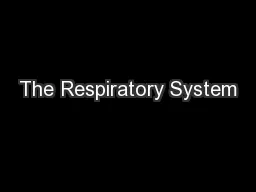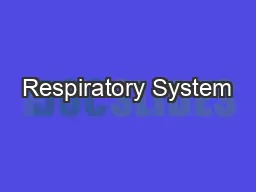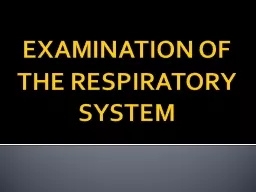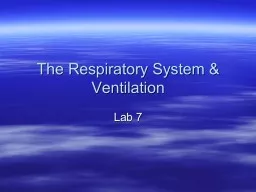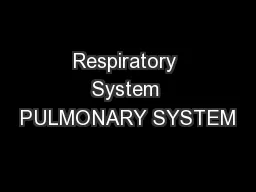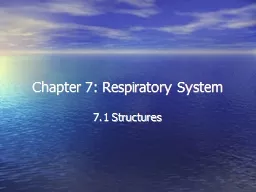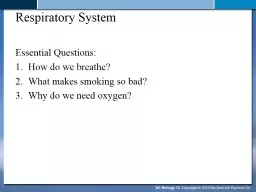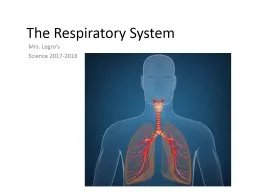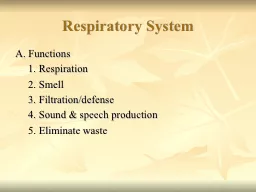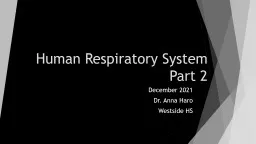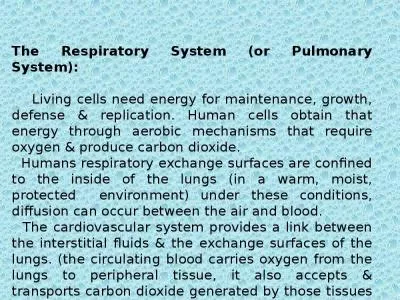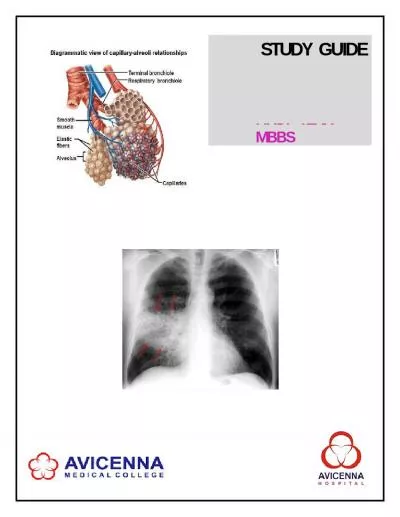PPT-Respiratory System
Author : ellena-manuel | Published Date : 2016-08-12
httpyoutubeHiT621PrrO0 To exchange oxygen and carbon dioxide between the blood the air and tissues Function of the Respiratory System The Flow of Air Nose or mouth
Presentation Embed Code
Download Presentation
Download Presentation The PPT/PDF document "Respiratory System" is the property of its rightful owner. Permission is granted to download and print the materials on this website for personal, non-commercial use only, and to display it on your personal computer provided you do not modify the materials and that you retain all copyright notices contained in the materials. By downloading content from our website, you accept the terms of this agreement.
Respiratory System: Transcript
Download Rules Of Document
"Respiratory System"The content belongs to its owner. You may download and print it for personal use, without modification, and keep all copyright notices. By downloading, you agree to these terms.
Related Documents


